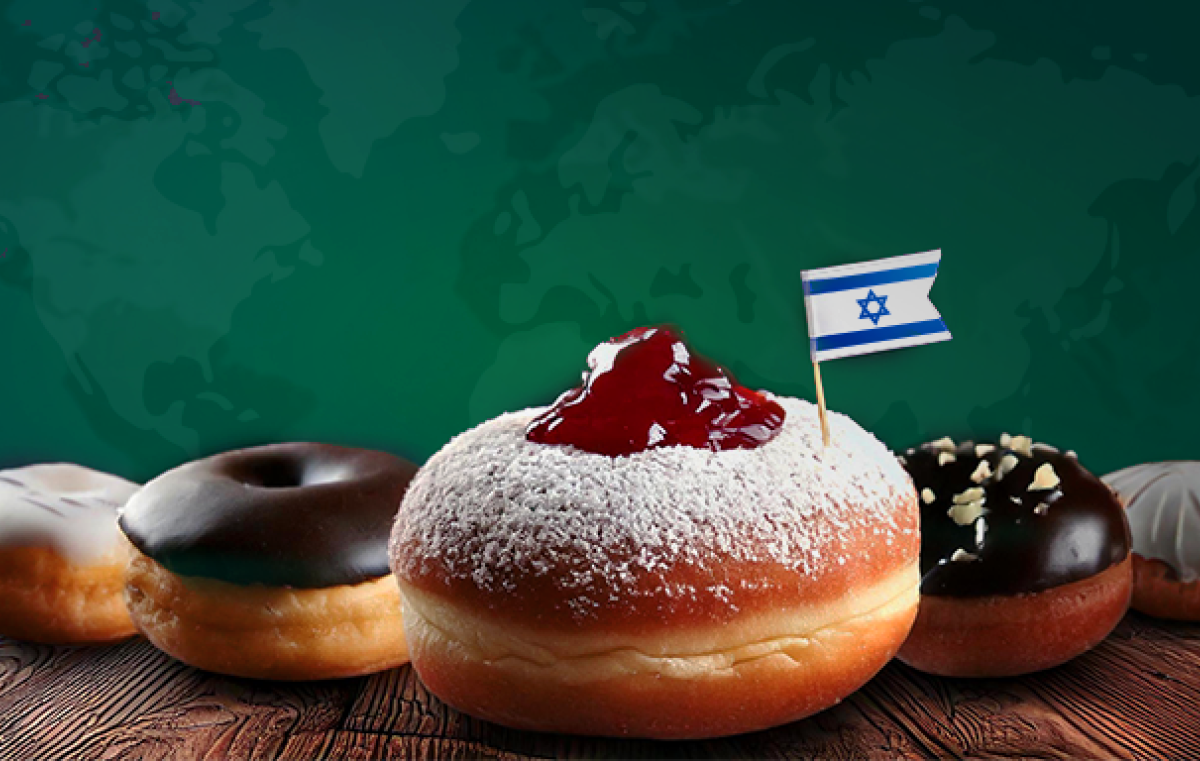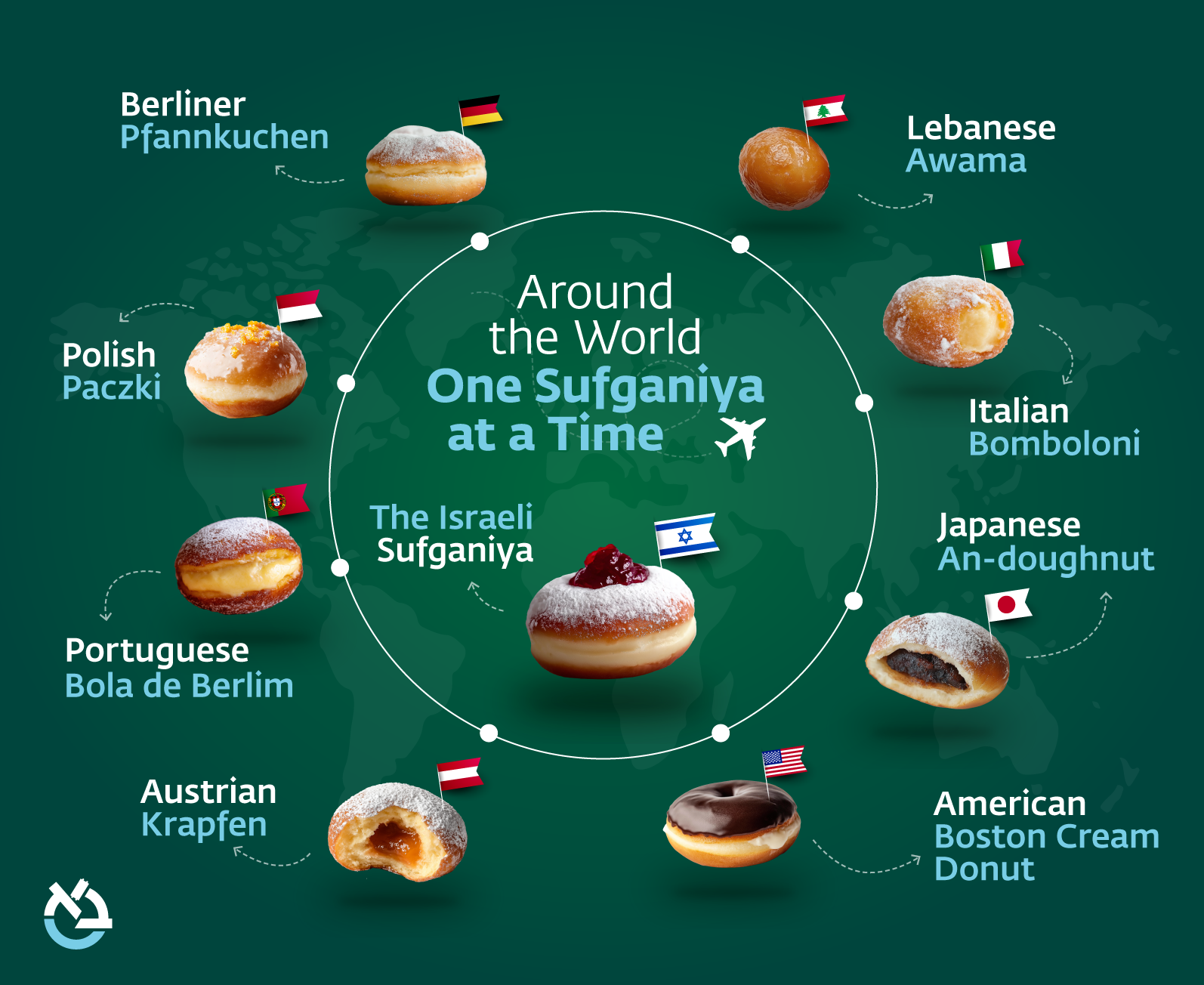Around the World, One Sufganiya at a Time
A BIU Academic Guide to International Sufganiyot, Traditions, and Fun Facts

As Hanukkah approaches, the familiar scent of sufganiyot fills the air across Israel. While our beloved jelly doughnuts have become a symbol of the Festival of Lights, many cultures around the world have their own delicious variations of fried, filled dough.
Join us on a mouthwatering journey around the globe!
The Israeli Sufganiya
Let's start at home with our classic sufganiya – a pillowy, sugar-dusted doughnut traditionally filled with red raspberry jam. Today, Israeli bakeries have revolutionized this treat with creative fillings from dulce de leche to pistachio cream.
Fun Fact: The Hebrew word "sufganiya" comes from the Greek word "sufgan," meaning "spongy" or "fried."
Berliner Pfannkuchen
Did you know that our sufganiyot likely originated from the Berliner Pfannkuchen? The Berliner, as it's commonly known, is remarkably similar to our Hanukkah favorite, traditionally filled with raspberry jam and dusted with powdered sugar.
Fun Fact: President John F. Kennedy famously (and incorrectly) declared "Ich bin ein Berliner" in 1963, accidentally calling himself a jelly doughnut!
Polish Pączki
These rich doughnuts are a pre-Lent tradition in Poland but share remarkable similarities with sufganiyot. Filled with rose hip jam and topped with candied orange peel, pączki are denser and richer than their Israeli cousins.
Fun Fact: On "Fat Thursday" before Lent, Polish people consume approximately 100 million pączki in a single day.
Portuguese Bola de Berlim
Portugal's take on the jelly doughnut is typically filled with egg custard rather than jam – a delicious variation that might inspire your next sufganiya adventure!
Fun Fact: These doughnuts are a beloved beach snack in Portugal, where vendors walk the shoreline calling "Olha a bola de Berlim!" (Look at the Berlin ball!)

Austrian Krapfen
These Viennese delights are slightly smaller than sufganiyot but equally delicious, often filled with apricot jam and vanilla custard.
Fun Fact: In Vienna, there's an old tradition of hiding one Krapfen filled with mustard instead of jam during Carnival celebrations!
American Boston Cream Donut
While not traditionally a jelly doughnut, this American classic with its vanilla custard filling and chocolate topping shows how different cultures have adapted filled doughnuts.
Fun Fact: The Boston Cream Donut was declared Massachusetts' official state donut in 2003 - the first state to designate an official donut.
Japanese An-doughnut
In Japan, doughnuts are often filled with sweet red bean paste (anko) – a unique twist that combines Western and Eastern culinary traditions.
Fun Fact: Created in 1969 by the Mister Donut chain, an-doughnuts became so popular that they inspired a whole range of Japanese-Western fusion desserts.
Italian Bomboloni
These Italian doughnuts are often filled with pastry cream, chocolate, or fruit preserves, proving that great minds think alike when it comes to fried dough!
Fun Fact: On Italian beaches, much like in Portugal, bomboloni vendors are a summer tradition, selling fresh doughnuts from white carts in the morning hours.
Did You Know?
- The tradition of eating fried foods on Hanukkah commemorates the miracle of the oil that lasted eight days
- Israeli bakeries sell approximately 24 million sufganiyot during the eight days of Hanukkah
- Modern Israeli bakeries now offer "designer sufganiyot" with unique flavors like halva, tiramisu, and even savory options
Happy Hanukkah from all of us at Bar-Ilan University! 🕎